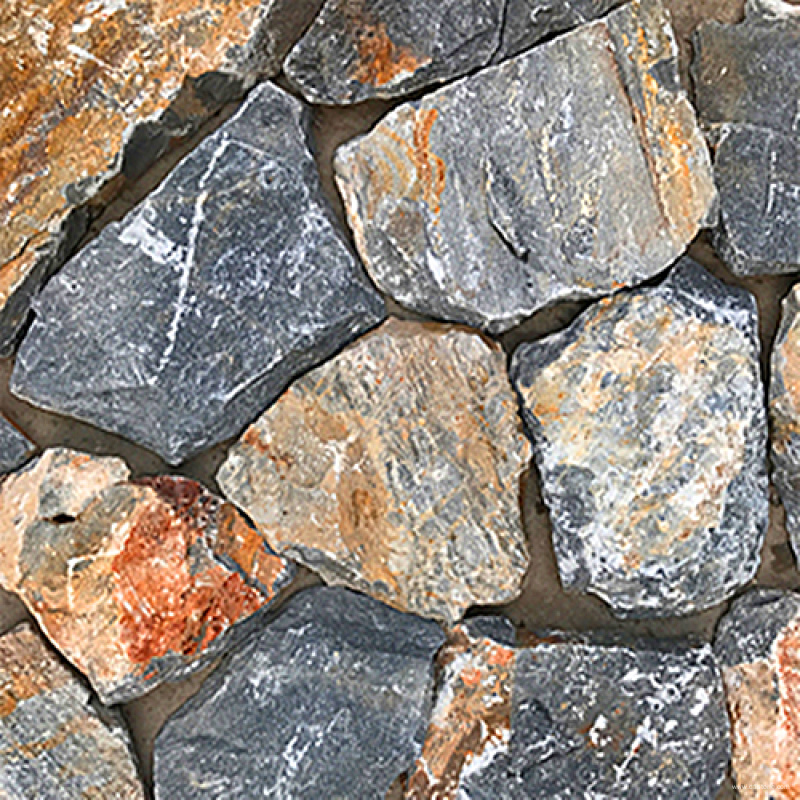So you’re on your way to laying a new path, but you don’t know where to begin. The wide range of styles and patterns means you have many options, but the overwhelming variety can leave beginners at a loss. We’ve broken down the mysteries, brick-by-brick, so you can easily plot the road to your ideal walkway or patio!

What is a paver?
A paver is any kind of paving stone, tile, brick, or concrete brick used in outdoor flooring. The ancient Romans used them to build the roads that are still here today. In contemporary homes, we use them for pathways, driveways, patios, pool decks, outdoor rooms, and garden paths. Their primary advantages over poured concrete are that they age well, don’t crack from heat or cold, and that single bricks can be re-leveled and replaced if the ground shifts beneath them. Plus, their diversity of styles and patterns offer an incredible range of beauty.

Black Natural Loose Stone Panel
What Are Pavers Made Out of?
Natural Stone: Flagstone and fieldstone are the most common types of natural stone pavers. You can easily recognize them by their irregular shape and natural finish.
Brick: Bricks made of clay sometimes make an appearance in home landscapes.
Concrete: Most of the pavers in contemporary landscaping are made of concrete mixed with aggregate. This adaptable material can produce bricks in a range of colors and styles.

Paver Styles 101
Let’s lay the foundations to help you understand and choose the best pavers. While they come in a dizzying array of styles, the key to distinguishing them is to look closely at their surface and edge. Each style usually has one of the three surface styles and one of three edges:
Surface Finishes
Flat: A smooth finish that looks polished and elegant.
Dimpled: A slightly uneven surface that lends a natural, weathered look.
Mottled: An even more weathered, Old-World look, similar to the roads in ancient cities.

Edge Finishes
Beveled: The cleanest of edges, this edge style tapers to the ground between cracks.
Rounded: Rounded edges that mimic the feel of weathered stones.
Worn edges: An even more aged and rustic look, like time-worn cobblestone.
Keeping these six features in mind, you can begin to see the main differences between each style. A “Holland” style, for example, is usually a rectangular brick with a dimpled surface and beveled edge, while a “Roman” brick has a mottled finish with worn edges.
Shapes and sizes are other components of each style. The most common shapes are rectangular and square. Another shape you’ll often see is the zig-zagging sides of interlocking bricks, designed to lock together tightly for a more durable surface. Hexagonal shapes, or a combination of squares and hexagons, are also popular. More specialized options include the triangular brick and the I-shape. Each style offers different aesthetics and weight-bearing strength.

Common Patterns
The pattern in which you lay your bricks also shapes the beauty and strength of each surface. Here are the most common patterns of rectangular pavers:
Stack Bond: Each brick is laid side by side in the same direction and orientation, giving a simple, straight appearance.
Running Bond: Like stack bond, except every second row is offset by half a brick, so the middle of each brick is aligned with the ends of the bricks below and above it. This has more strength than the Stack Bond and works well for curved pathways, patios, and some driveways.
Basketweave: This style describes a pattern of two horizontally-laid bricks followed by two vertically-laid bricks. It is popular in courtyards, gardens or patios, but does not have as much strength as the Running Bond.

Herringbone: Bricks are lined up at right angles to each other in a repeating L-shape formation. This interlocking design adds a lot of strength, making it especially suitable for driveways.
3-Stone Pattern: Three differently sized square or rectangular stones create a pattern that is suitable for vehicles or pedestrian traffic.
5-Stone Pattern: A pattern of five differently-sized stones is ideal for footpaths, but not driveways, as bigger stones may not remain level under pressure.
Header or Border: This style consists of a row of vertically laid bricks around the outside of your design to create a border. It works well with the Basketweave.

How to Talk about Styles When Working with a Designer
With this full quarry of paving stone lingo, you now have the building blocks to talk about pavers with your designer. You can discuss the material, finish, size, shape, and pattern that you desire and the needed weight-bearing strength for each selection. Then, of course, there is the choice of color, which is a whole topic on its own!









